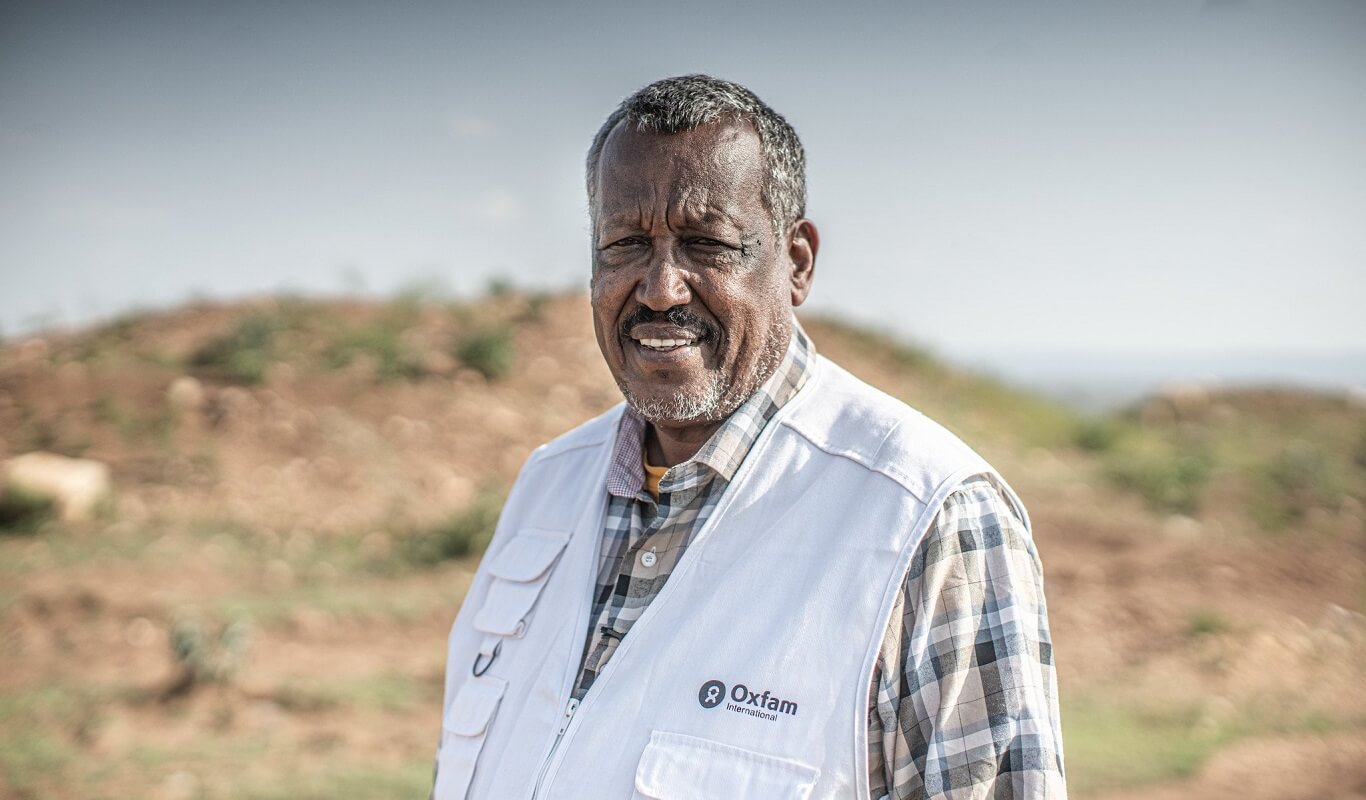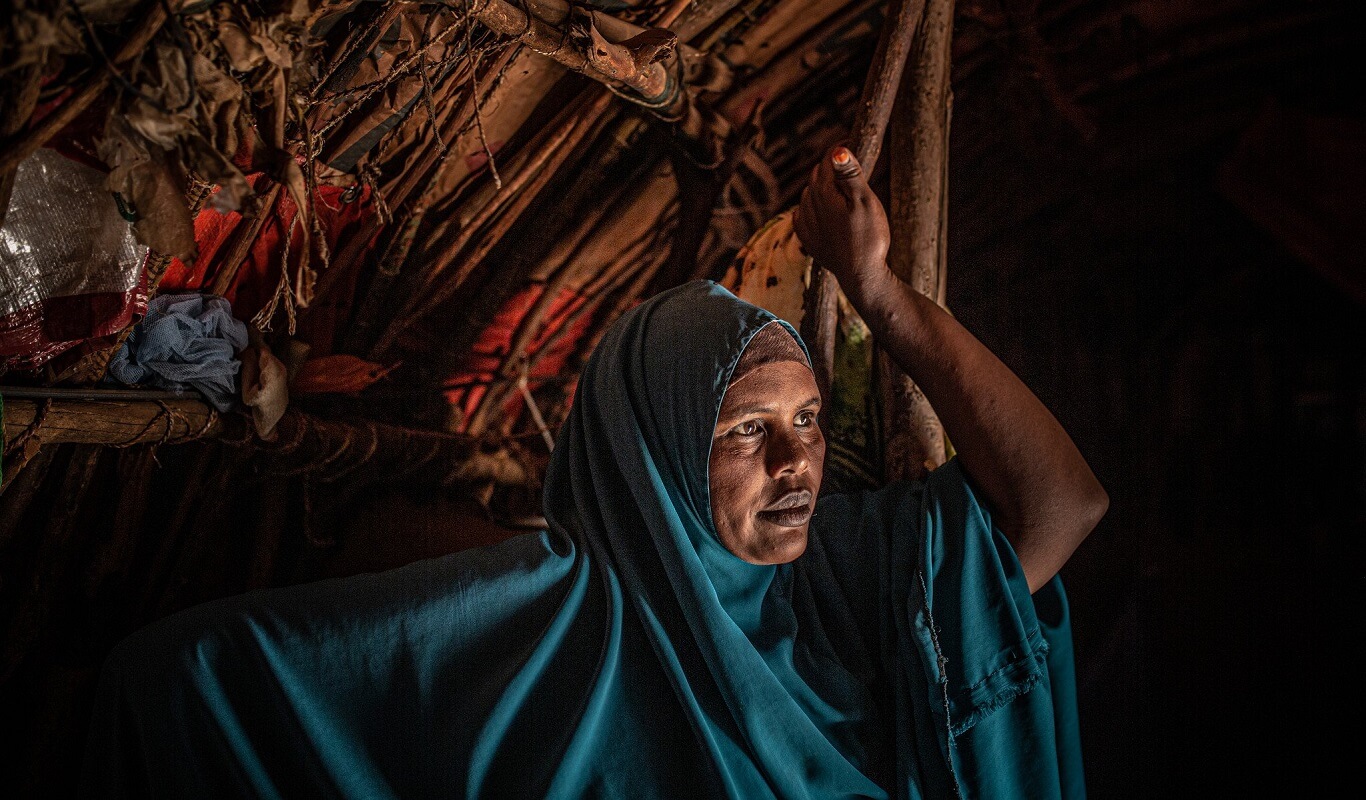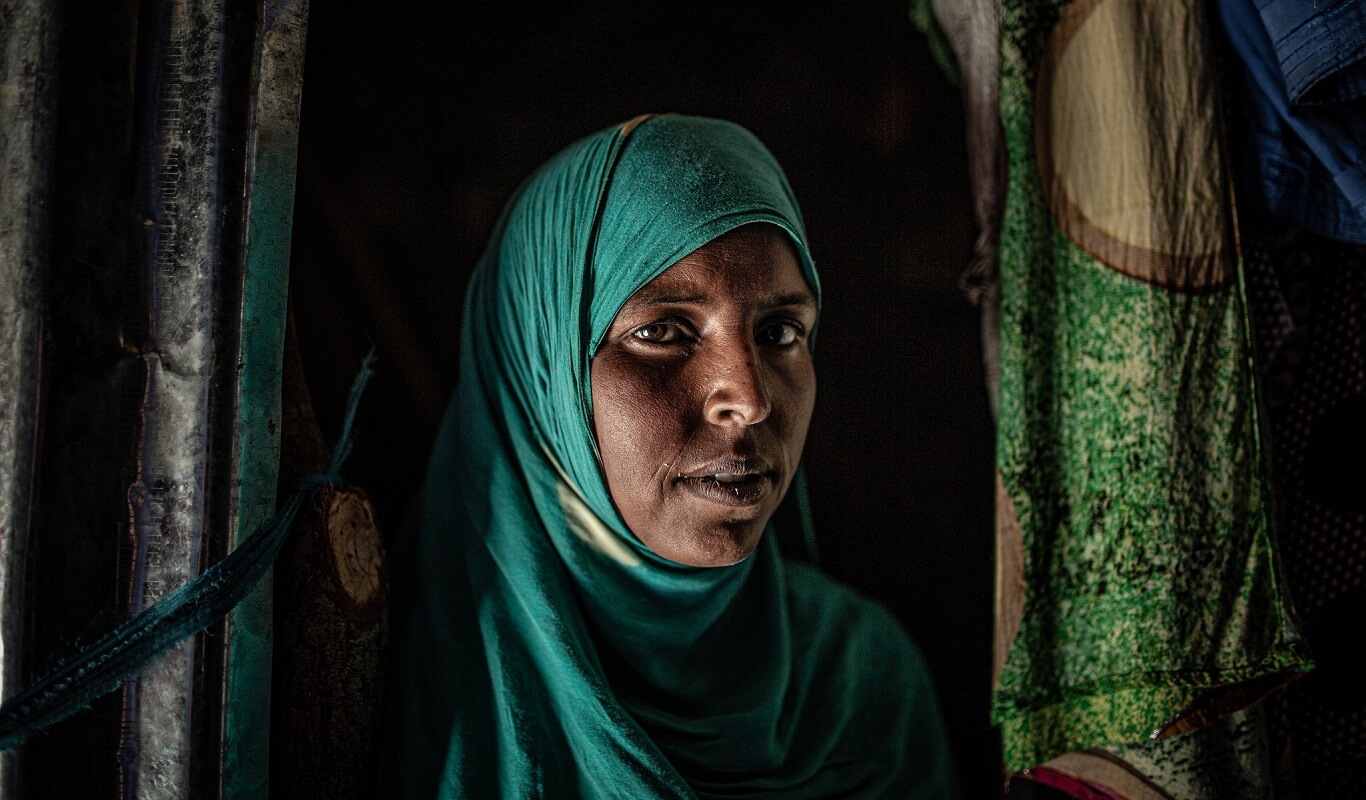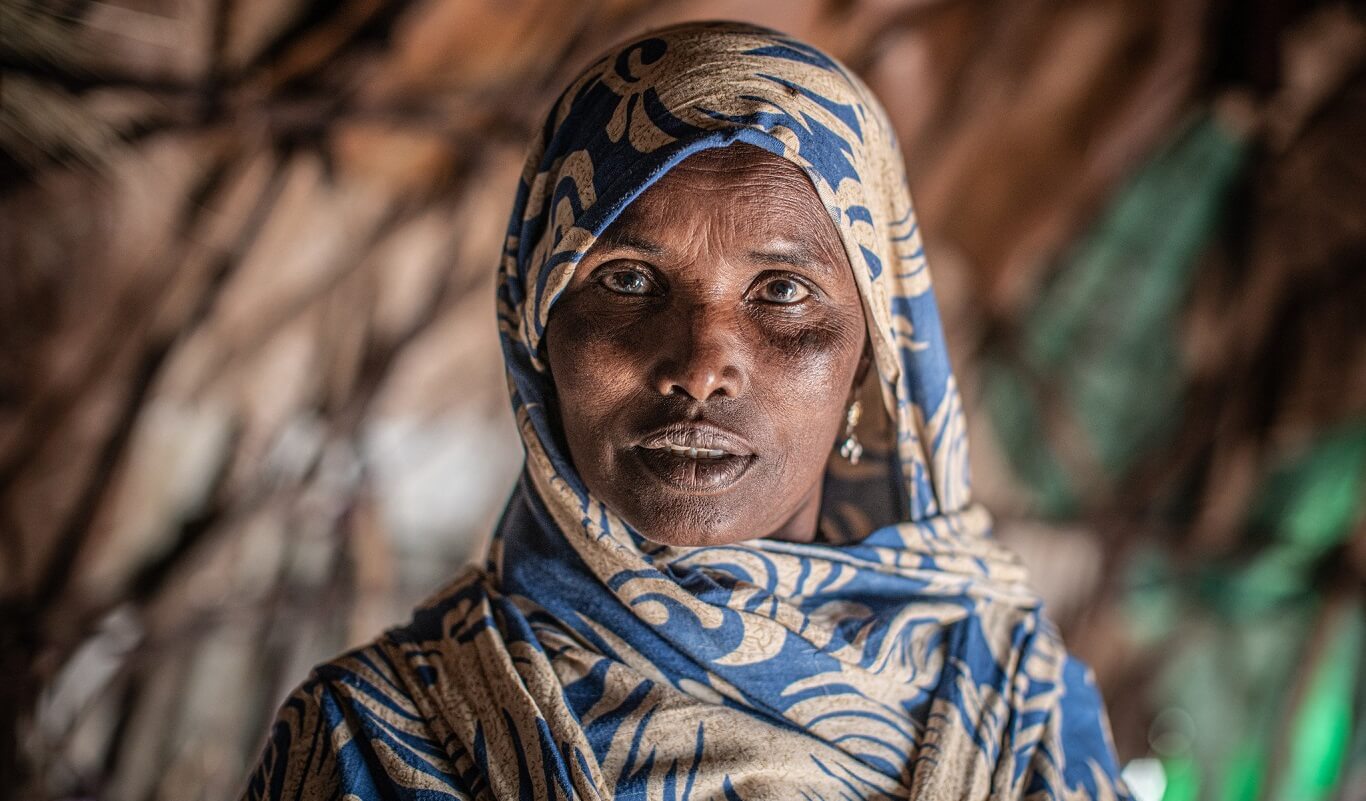Climate change driving drought crisis in Horn of Africa
Families in Ethiopia struggle to survive a near-constant state of drought, and conflict.
For people in the Horn of Africa, the dangers of climate change are not a vague, far-off threat. People in the Somali Region of Ethiopia, like many others in Kenya and Somalia, are now enduring near-constant severe drought. Despite bearing no responsibility for the factors driving climate change, they are suffering the effects and struggling to survive.
The drought in this region is part of a trend. Across eastern, southern, and central Africa, Oxfam estimates that 52 million people in 18 countries are facing up to crisis levels of hunger as a result of weather extremes, compounded by poverty and conflict. In Ethiopia, Somalia, South Sudan, and Sudan, more than 750,000 people have been displaced by conflict and 350,000 have been displaced by extreme weather. Globally, on average more than 20 million people a year were internally displaced by extreme weather disasters over the last 10 years – 87 percent of all people internally displaced by all disasters during this period.
Oxfam is providing assistance to families in Ethiopia’s Somali Region. We have recently vaccinated livestock, provided water, sanitation, and hygiene assistance for people displaced by the drought and conflict, and cash to help people buy food and other essentials. However, Oxfam as well as other aid organizations and the governments in the Horn of Africa are urgently seeking resources to meet the needs of the 15 million people requiring humanitarian assistance.
I recently spent five days traveling across the Somali Region and spoke to people living in the middle of the drought crisis. Here are their words.
Million Ali
Million Ali is a program officer and livelihoods expert for Oxfam, based in Jijiga in the Somali Region.

“After the droughts in 2015 and 2017, many areas have still not received adequate rain. Communities are losing a lot of livestock, the main source of livelihood for many—substantial losses, like 50 to 70 percent. And there have been crop failures for the last four years. So we have been providing cash, and vaccinations for livestock to help save the remaining animals that have survived the drought.”
“The drought we are encountering now is the worst of its kind. In 2011 there was a bad drought, but it did not cover the whole area at the same time. Some areas were better off, some were worse. But now the drought in the last three or four years is affecting almost all areas similarly, so people are not able to move their animals from place to place in search of pasture and water.”
“Livestock are the basis of livelihood in the Somali region. Eighty-five percent of the population of the Somali region depends on livestock, even more than crops. Crops are more vulnerable, because they can’t migrate. Some livestock survive, about 20 or 30 percent. That is what they are trying to keep, to survive with, and to live on.”
Hoden Abdi Iwal
Hoden Abdi Iwal, 36, married mother of 10 children, lives in Gilo (about 1.5 hours southeast from Jijiga). She and her family used to have six cattle and 70 sheep and goats, but the drought has reduced their herd to just two cows and 20 sheep and goats. They have 1.5 hectares (about 3.5 acres) of farm land where they normally grow maize, sorghum, tomato, and onion. They get their water from a severely depleted reservoir a short walk from their home, but Iwal says the water is not safe and can make her children ill.

“People here live on crops and livestock … now people are in a terrible situation. There was grass [pasture] when it rained, and our crops supported our family, but now there’s no rain, nothing has come up, we have no crops and the livestock are suffering. Now we have no food, and we are getting no support [aid]. We are in a serious situation.”
“The cattle are in the worst condition. They are more vulnerable, but even the goats are suffering.”
“We look for work as laborers, or work in tea shops and send back money, make charcoal … we can only get income like this. So many people have moved away to be with family members who are better off.”
She says her family is eating at best two times per day, but what food she can prepare is not enough.
“The children always ask, ‘add more; it’s not enough.’ I say to them ‘have water. When I get more food I will bring it to you.’ I tell them someone will bring us food, that their father will get some food, Allah will help us… Sometimes it’s a lie and I won’t make them happy this way, but I tell them I hope they will get more food soon.”
“Please show the world, ask for support for us, get the government to see how we are suffering. The world is not aware. We are isolated and struggling here alone.”
Kawsar Omer Abdi
Kawsar Omer Abdi lives in Harshin District south of Jijiga. She is 30, has been married for 12 years, and has six children. She and her extended family used to have 300 animals; now they have about 25 goats. They are surviving on food aid and occasional cash from international NGOs and the Ethiopian government. She says she feeds her children three times per day, even if it is just a small meal, and she and her husband and his other wife must skip meals.

“We’ve been badly affected for the last few years of continuous drought. There has been a total failure of all crops for the last four years.”
“Our income is down because we have no livestock to sell … we have no income now.”
“We planted sorghum. We grow it for the livestock, but it does not mature.”
“If we get rain we want to restock our herd, but if we can’t do that we might try to grow more sorghum, so long as the rain is available.”
“My workload is increasing, because our donkey died so now I have to carry water, and I have to make and sell charcoal and firewood myself to support the family. The workload increases as your income falls.”
Shamis Alel
Shamis Alel, 50, is a widow and mother of four children. She is now living in a camp north of Jijiga because she and her family were displaced by an inter-ethnic conflict in the nearby Oromiya region two years ago. Armed men killed her husband, stole their cattle, and ran them off their land. Conflicts along the Somali-Oromiya border areas are directly linked to competition over land, pasture, water, and political power. Pressure from climate change has made these conflicts worse. There are now nearly three million people in Ethiopia displaced by conflict and climate-related problems like drought and floods.

“I’ve been here two years, following a land conflict. They told us we no longer have our land and have to move. We had to bury our dead in the middle of the night. We left everything and ran away, and they chased us here. We just thought to run from there and get to a safe place, because if we had stayed there we would all have been killed.”
“People here gave us clothes because we had nothing to wear. They gave us whatever they had and helped us to settle here.”
“We used to raise maize, sorghum, khat, and livestock. We had 7.5 hectares (18 acres), 10 sheep and goats, and 30 cattle. We had everything. I was happy when my husband was alive. I was very happy when I was there. But that is all gone since the conflict. We lost everything. Now we are terrified the conflict can start again.”
“We are seeing a change in the rain pattern. The rain is very late, and most of the livestock are struggling to find pasture. Lack of water and food, and problems with changing climate, make women the most vulnerable. If we lose our sources of water, it makes it very difficult. If the weather continues to change like this, it will make it very difficult.”
“If the government or NGOs can support us, we would ask for land and a plow so we can grow crops. Since we left our land and don’t have any tools and no oxen, we can’t plow the land. There are no tools, no seed; there is nothing here.”
“Since we came here, we got water from Oxfam, plastic sheets, jerry cans … but food is scarce. We need food. If the government and NGOs can bring food, nutrition for the children, that would help us.”
You can help people struggling to survive drought in the Horn of Africa, and support long-term development initiatives in more than 90 countries by donating today.

